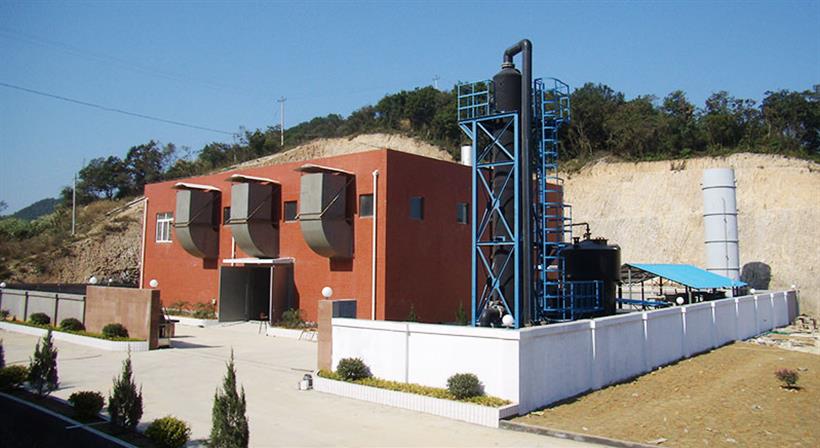Fuzhou Hongmiaoling Landfill Gas to Electricity Project

Introduction
The Fuzhou Hongmiaoling Landfill Gas to Electricity Project is a standout example of how innovative waste management can deliver real climate benefits and support sustainable energy development. Located in southeastern China, this project captures landfill gas—a potent source of methane emissions—and uses it to generate clean electricity, displacing fossil fuel-based power and reducing greenhouse gas emissions. As global cities grapple with growing waste and energy demands, projects like Fuzhou Hongmiaoling offer a practical, scalable solution for both environmental protection and community advancement.
Table of Contents
Project Overview
The Fuzhou Hongmiaoling Landfill Gas to Electricity Project is operated by Fujian Tianyi Renewable Energy Technology & Utilization Co., Ltd., with support from international partners such as Eco Bank Ltd. (Japan). The project was registered under the Clean Development Mechanism (CDM) in 2008 and has since become a model for landfill gas utilization in China and beyond.
At its core, the project collects methane-rich landfill gas (LFG) produced by the decomposition of organic waste at the Hongmiaoling landfill. Instead of allowing this methane—a greenhouse gas over 25 times more potent than carbon dioxide—to escape into the atmosphere, the project captures and combusts it in engines to generate electricity. This process not only reduces direct methane emissions but also offsets the need for coal-fired power in the local grid.

Environmental Impact
Methane Capture and Emission Reductions
Methane is a major contributor to climate change, and landfills are one of the largest anthropogenic sources of this gas. The Fuzhou Hongmiaoling project captures and utilizes landfill gas, preventing an estimated 143,194 metric tonnes of CO2 equivalent emissions annually during its crediting period. By converting methane into electricity, the project delivers a double benefit: reducing direct emissions and displacing dirtier fossil fuel generation.
Clean Energy Generation
The captured landfill gas is used to generate up to 2.5 MW of electricity, which is fed into the local grid. This clean energy replaces electricity that would otherwise be produced from coal, further reducing the region’s carbon footprint. The project’s contribution to renewable energy aligns with China’s broader goals of increasing non-fossil fuel energy sources and improving air quality in urban areas.
Social and Economic Benefits
Local Job Creation
The construction and ongoing operation of the landfill gas-to-electricity facility have created jobs for local residents. These include roles in engineering, facility management, and environmental monitoring. The project also supports skill development and knowledge transfer in advanced waste management and renewable energy technologies.
Community Health and Safety
By capturing and combusting landfill gas, the project reduces odors and the risk of landfill fires, improving the quality of life for nearby communities. The reduction in methane emissions also lowers the risk of explosive hazards associated with uncontrolled landfill gas buildup.
Project Validation and Transparency
The Fuzhou Hongmiaoling project is registered under the United Nations Clean Development Mechanism (CDM), ensuring rigorous third-party validation and ongoing monitoring of emission reductions. The project is also featured in high-integrity carbon credit portfolios, such as those curated by CNaught, which emphasizes transparency and measurable climate impact.
Broader Context: Landfill Gas Projects in China
China has rapidly expanded its landfill gas utilization capacity in recent years, with dozens of projects now operational across the country. These initiatives are supported by favorable policies, such as priority grid access and premium tariffs for electricity generated from landfill gas. The Fuzhou Hongmiaoling project is among the leading examples, demonstrating how municipal waste can be transformed from an environmental liability into a valuable energy resource.
Conclusion
The Fuzhou Hongmiaoling Landfill Gas to Electricity Project exemplifies the potential of innovative waste management to deliver climate, energy, and community benefits. By turning landfill methane into clean power, the project reduces greenhouse gas emissions, supports renewable energy goals, and improves local quality of life. As cities worldwide seek sustainable solutions for waste and energy, projects like Fuzhou Hongmiaoling provide a proven blueprint for action.
Take action today, calculate your emissions using Coffset’s carbon footprint calculator and contribute to projects that make a real difference!
References:
https://cdm.unfccc.int/Projects/DB/DNV-CUK1204757435.62/view
https://app.carbonmark.com/projects/VCS-253
https://www.cnaught.com/projects
https://www.globalmethane.org/documents/landfills_cap_china.pdf